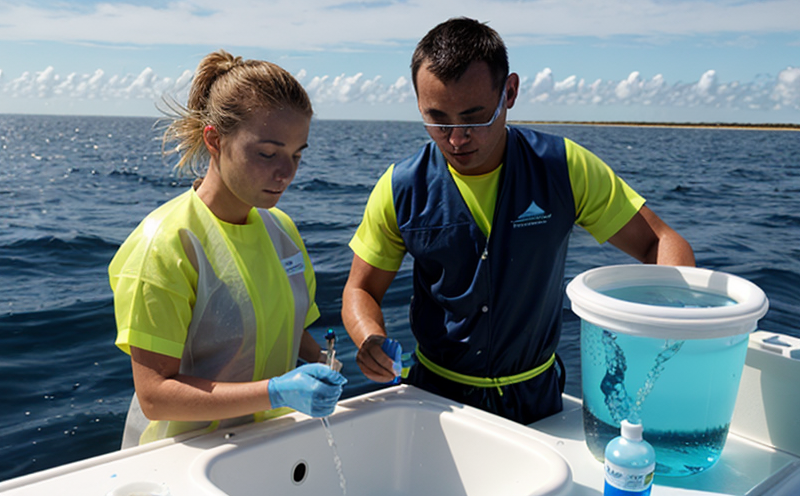ISO 11885 ICP-OES Metals Test in Seawater
The ISO 11885 Inductively Coupled Plasma Optical Emission Spectroscopy (ICP-OES) test is a critical method for detecting trace metals in seawater. This method, widely recognized and validated by international standards, provides precise and accurate quantification of metal concentrations down to parts per billion (ppb). Seawater, as a complex matrix, requires sophisticated analytical techniques such as ICP-OES for reliable analysis.
The test is particularly useful in environmental monitoring, water quality assessment, and compliance with regulatory standards. By identifying metals like copper, zinc, lead, nickel, and iron, this testing ensures that seawater meets stringent quality benchmarks set by agencies such as the World Health Organization (WHO) and local environmental protection departments.
Seawater contains a wide array of dissolved elements, many of which are essential for marine life. However, excessive concentrations can be detrimental to ecosystems. Therefore, regular monitoring is crucial to maintain ecological balance. The ISO 11885 method enables accurate measurement, supporting informed decision-making and compliance with environmental regulations.
The instrumentation used in this testing includes high-resolution ICP-OES spectrometers capable of handling complex matrices like seawater. Sample preparation involves digestion techniques that ensure all target metals are released into the solution for analysis. The process typically starts by collecting representative water samples from various locations and depths, followed by acid digestion to dissolve potential metal compounds.
Once digested, the sample is introduced into the ICP-OES instrument where it is atomized and excited using an RF plasma source. This excitation causes the metal ions in the solution to emit light at specific wavelengths unique to each element. The emitted light is detected by a spectrometer, which then analyzes the intensity of this light to determine metal concentrations.
The precision and accuracy of ICP-OES make it an ideal choice for seawater analysis. It offers low detection limits and high throughput, enabling rapid testing even in large sample volumes. This capability supports continuous monitoring programs essential for environmental protection.
Compliance with international standards like ISO 11885 ensures that the results are reliable and comparable across different laboratories worldwide. This is particularly important in global initiatives aimed at safeguarding marine environments. By adhering to these standards, we ensure that our clients receive accurate, traceable data.
Understanding the complexity of seawater and its role in global ecology underscores the importance of robust testing methods like ISO 11885 ICP-OES. Regular monitoring helps identify potential issues early, allowing for proactive management strategies to protect marine ecosystems.
Scope and Methodology
| Parameter | Description |
|---|---|
| Excitation Technique | Inductively Coupled Plasma (ICP) |
| Emission Spectroscopy Method | Optical Emission Spectroscopy (OES) |
| Detection Limits | Parts per billion (ppb) |
| Spectral Overlap Correction | Automated calibration using matrix-matched standards |
| Sample Volume | 100 mL for digestion and analysis |
Benefits
- Precise quantification of trace metals in seawater, down to ppb levels.
- Compliance with international standards and regulatory requirements.
- Rapid testing capabilities for large sample volumes.
- Avoidance of potential ecological damage by identifying metal excess early.
- Supports continuous monitoring programs essential for environmental protection.
- Ensures reliable and traceable data, enhancing confidence in the results.
Eurolab Advantages
EuroLab’s expertise in ISO 11885 ICP-OES testing for seawater is unparalleled. With state-of-the-art equipment and a team of experienced professionals, we provide accurate, reliable results that meet the highest standards.
- Access to cutting-edge ICP-OES spectrometers capable of handling complex matrices like seawater.
- Experienced analysts skilled in sample preparation techniques for robust digestion and analysis.
- Comprehensive reporting tailored to the needs of our clients, including detailed methodologies and results.





